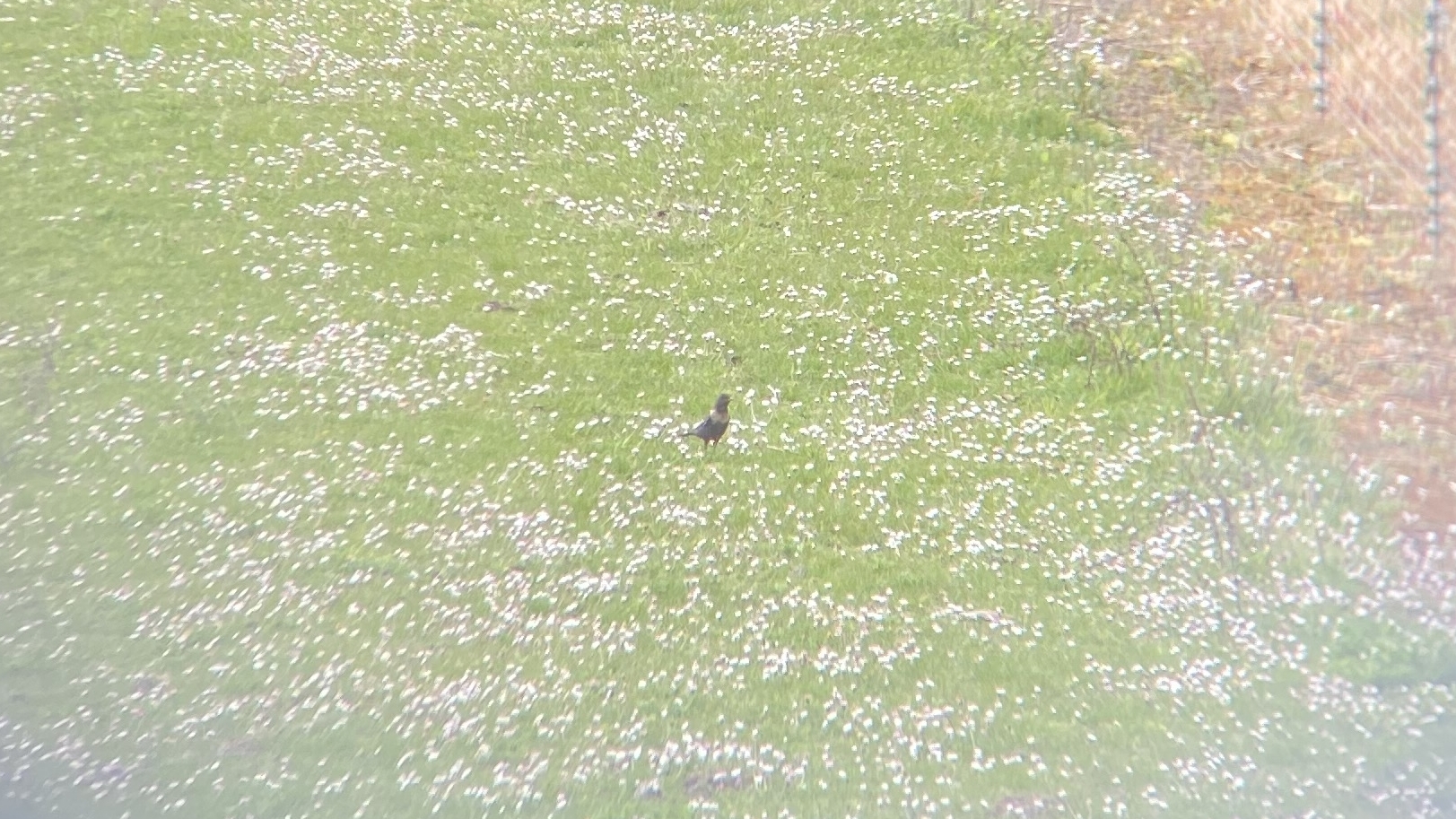Wildlife sightings for 1st May 2012
1 Cuckoo - perched on marsh fence, flew to the summer route after being harrassed by a Lapwing 1 Shelduck - main lake 1 Little Egret - main lake 1 Whimbrel - flew E @ 1.05pm 1 Oysterca [...]
1 Cuckoo - perched on marsh fence, flew to the summer route after being harrassed by a Lapwing
1 Shelduck - main lake
1 Little Egret - main lake
1 Whimbrel - flew E @ 1.05pm
1 Oystercatcher - wader scrape
1 Common Sandpiper - main lake island infront of WWF hide
3 Little Ringed Plover - main lake, wader scrape
8 Dunlin - flew over site 5 @ 9am, 3 @ 11am
6 Redshank - grazing marsh, reservoir lagoon, wader scrape
120 Swift - site count
90 Swallow - grazing marsh
4 House Martin - grazing marsh, wader scrape
16 Yellow Wagtail - marsh, scrape, 1 flew NE, 2 flew NW
1 White Wagtail - main lake
1 Whinchat - wader scrape
6 Greenland Wheatear - wader scrape
4 Lesser Redpoll - south route then flew W
1 Peregrine - over site and river
Recent bird highlights: Peregrine, Whimbrel, Curlew, Black-tailed Godwit, Jack Snipe, Redshank, Common Sandpiper, Green Sandpiper, Little Ringed Plover, Dunlin, Iceland Gull, Cuckoo, Turtle Dove, Yellow Wagtail, Wheatear and Swallow.
With spring in the air the Cetti’s Warbler are becoming more vocal with at least 9 birds to be found across the reserve. Many Chiffchaffs have arrived along with smaller numbers of Willow Warbler, Blackcap and Garden Warbler. Goldcrests can be heard singing away by the Trappers Lodge cabin in World Wetlands along with many other common songsters like Blackbird, Wren, Great Tit, Greenfinch, Song Thrush and Chaffinch.
Lapwing are nesting on the main lake/scrape shingle islands and grazing marsh fields, and performing territorial flight displays. The first Lapwing chicks can now be seen on the wader scrape and grazing marsh. The Sand Martins have also arrived and can be seen flying in and out of the nest bank.
The marsh will remain wet through early spring to attract a host of visiting waders and other wildfowl, as well as Yellow Wagtail and Wheatear. Look out for possible Water Pipit on the flooded field edges. The wader scrape is now being drained and wetted on a weekly basis to attract feeding waders.
Moths: Common Quaker, Hebrew Character, Chestnut, Clouded Drab, Esperia sulpurella, Epermenia chaerophyllea, Powdered Quaker, Light Brown Apple Moth, Early Grey.
Flowering plants: Cowslip, Cuckooflower, Cow Parsley, Hawthorn, Blackthorn, Wild Cherry, Wood Anemone, Ramsons, Common Mouse-ear, Field Wood-rush, Marsh Marigold, Snake’s Head Fritillary, Red Dead-nettle, Primrose, Oxford Ragwort.
Water Voles: 5 seen in world wetlands, waterlife and wildside, Reed Swamp exhibit is a good bet, near the sluices.
Butterflies and insects: Comma, Brimstone, Peacock, Small Tortoiseshell, Orange-tip, Holly Blue, Speckled Wood, Small White, Common Bee-fly, 7-spot Ladybird, Large Red Damselfly.
Reptiles and Amphibians: A recent survey revealed 85 Slow Worms, 3 Grass Snakes, 2 Common Lizards, and 6 juvenile Smooth Newts. There are also small numbers of Marsh Frogs croaking on sunny days. Listen out in wildside.



